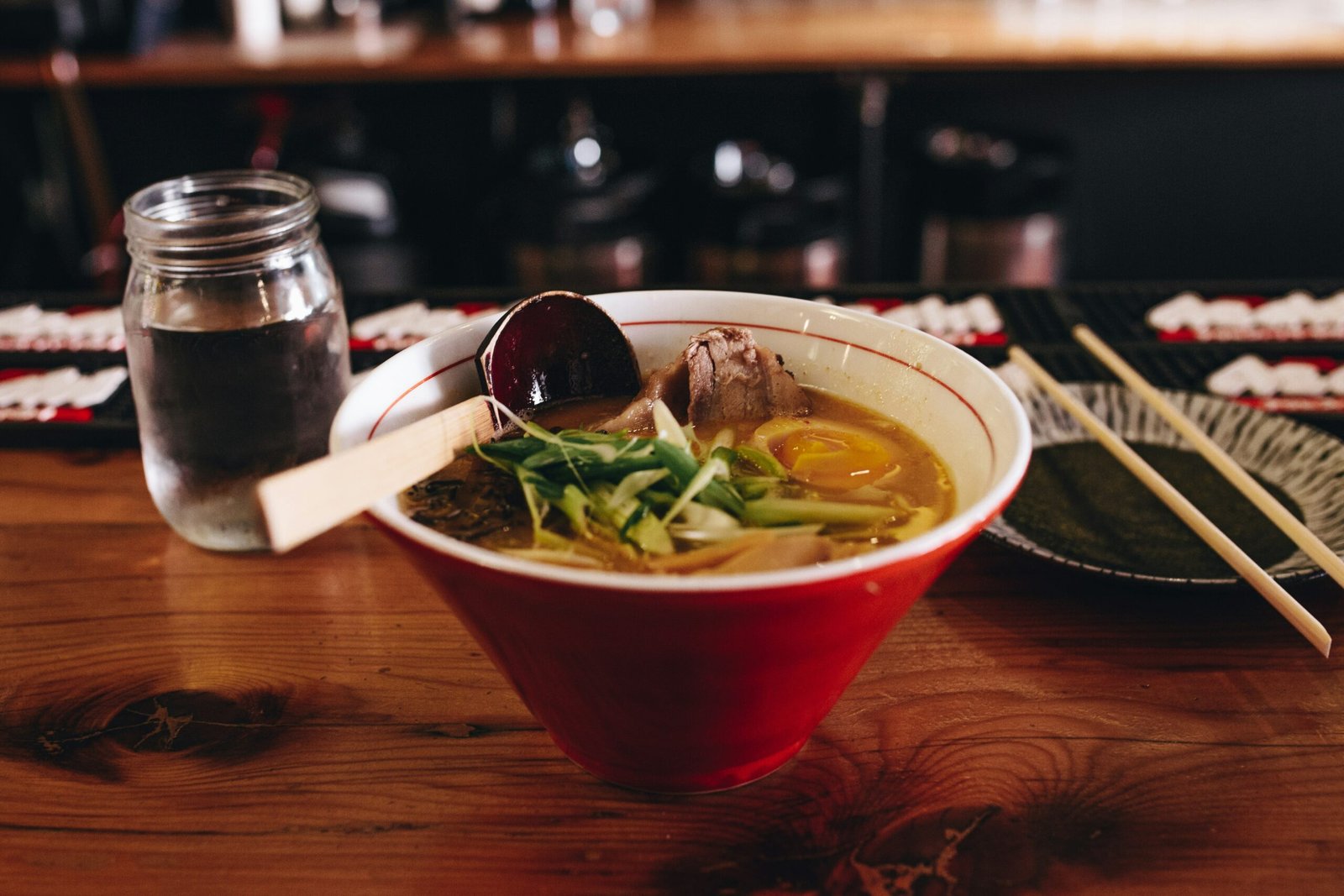Introduction to Egusi Soup
Egusi soup is a traditional dish originating from West Africa, particularly cherished in Nigeria, where it holds a significant place in the culinary landscape. This delectable soup is prepared using ground melon seeds, known as egusi, which contribute a distinctive flavor and creamy texture, setting it apart from other soups in the region. The preparation of egusi soup is often seen as an art, requiring a careful blend of various ingredients, highlighting the complex flavors inherent to West African cuisine.
Historically, egusi soup is believed to have originated among the Yoruba and Efik peoples, gradually spreading across various ethnic groups within Nigeria and across neighboring countries. The dish is not only popular for its rich taste but also for its cultural significance as it often brings families together. During festive celebrations, gatherings, or important occasions, egusi soup is frequently served, symbolizing unity and the sharing of tradition.
The primary ingredient in this culinary delight is melon seeds, which are not only tasty but also packed with nutrients, making egusi soup a wholesome meal option. Alongside the egusi, various seasonings and vegetables, such as spinach or bitter leaf, can be added, enhancing the soup’s overall flavor profile. The adaptability in the ingredients allows each region or household to put its unique spin on the classic recipe, resulting in a variety of local versions throughout West Africa.
In addition to its delicious taste, egusi soup carries different names across regions, including ‘Iyan’ when served with pounded yam in Nigeria. This demonstrates the soup’s versatility and enduring presence within many communities. The savory and hearty nature of egusi soup has earned it a special place in the hearts and kitchens of those who savor it, making it a beloved staple and a culinary delight in West African cuisine.
Ingredients and Nutritional Benefits

Egusi soup is celebrated for its rich flavors and hearty texture, primarily derived from its key ingredients. The star of this dish is egusi, or melon seeds, which are known for their high protein content. These seeds, when ground, provide a thickening agent that enhances the soup’s texture. In addition to proteins, egusi is packed with healthy fats, essential for maintaining energy levels and supporting cellular function.
Vegetables play a crucial role in the preparation of Egusi soup. Commonly used greens include spinach, bitter leaf, or pumpkin leaves. These vegetables not only add vibrant color to the dish but also contribute an assortment of vitamins and minerals. For instance, the greens are high in vitamins A and C, which are vital for immune health and skin integrity. Furthermore, they offer dietary fiber, promoting digestive health.
The inclusion of meat, often goat, chicken, or fish, adds both flavor and nutritional value to Egusi soup. These proteins are important for building and repairing tissues, making the dish a substantial meal option. Additionally, the fats derived from the meats impart a layer of richness to the dish, enhancing its overall taste.
Spices such as pepper and seasonings are integral to crafting the unique flavor profile of Egusi soup. They not only provide heat but also possess various health benefits, including anti-inflammatory properties. By carefully selecting the right blend of spices, cooks can elevate the flavors while ensuring nutritional value remains intact.
Overall, Egusi soup serves as a nourishing dish that harmonizes taste and health. With protein from the egusi seeds, vitamins from the vegetables, and sustenance from the meats, it serves as an essential addition to a balanced diet, showcasing the intricate culinary traditions of West Africa.
Step-by-Step Recipe for Egusi Soup

Making Egusi soup from scratch is a rewarding culinary experience that showcases the rich flavors of West African cuisine. To begin this process, gather the following ingredients: 2 cups of ground egusi seeds (melon seeds), 2 cups of spinach or bitter leaf, 1 pound of meat (beef, goat, or chicken), 1 pound of assorted meat (tripe, cow skin), 1 medium onion, 2-3 tablespoons of palm oil, 2 tablespoons of ground crayfish, 2-3 habanero peppers (to taste), seasoning cubes, and salt. Fresh fish, like catfish, can also be added for extra flavor.
Start by preparing your ingredients. Wash the spinach or bitter leaf thoroughly, and cut the meat into bite-sized pieces. In a large pot, place the meat, add chopped onions, seasoning cubes, and salt, and cover with water. Cook until the meat is tender, then set aside. In a separate bowl, combine the ground egusi seeds with a bit of water to form a thick paste.
In the same pot used for the meat, heat the palm oil over medium heat until it is hot but not smoking. Add the egusi paste, stirring constantly to prevent burning. Allow this to cook for about 10 minutes, which helps develop the flavor. Gradually add in the cooked meat, along with any reserved broth, ensuring it reaches your desired consistency.
Next, incorporate the spinach or bitter leaf and ground crayfish. Allow the soup to simmer for about 15 more minutes. During this time, taste and adjust the seasoning with additional salt or pepper as necessary. For those interested in customizing their Egusi soup, consider adding vegetables like bell peppers or mushrooms, or people can opt for a vegetarian version using mushrooms and tofu.
Egusi soup is often accompanied by traditional side dishes such as pounded yam, fufu, or rice. This hearty dish not only offers delicious flavor but also carries cultural significance throughout West Africa. By following this step-by-step recipe, anyone can enjoy the rich experience of making and savoring Egusi soup at home.
Serving Suggestions and Popular Pairings
Egusi soup, a beloved dish from West Africa, is not only a delight to the palate but also a flexible dish that can be paired with various accompaniments. The traditional side dishes such as fufu and pounded yam are popular choices that truly enhance the dining experience. These starchy staples provide a wonderful texture contrast to the rich and hearty nature of Egusi soup. Fufu, made from cassava or plantains, is typically pounded until smooth and elastic, making it an ideal scoop for the thick soup. Similarly, pounded yam, created by boiling yam and then pounding it until it achieves a stretchy consistency, complements the flavors of Egusi soup exquisitely.
Additionally, rice can be served alongside Egusi soup, particularly in regions where this grain is a staple in everyday meals. This combination allows the soup’s rich flavors to permeate the rice, creating a delightful dish that is both filling and satisfying. Some people also enjoy pairing Egusi soup with various types of bread, such as Nigerian moi moi or even African chicken pies, as these provide a crunchy contrast to the smoothness of the soup.
Egusi soup holds a special place in West African culinary traditions and is often featured at festive celebrations, family gatherings, and communal feasts. It is a dish that symbolizes togetherness, often served in large quantities to cater to numerous guests. Whether it’s a wedding, a religious ceremony, or a simple family get-together, Egusi soup fosters connection among people, making it a must-have on such occasions.
By incorporating traditional sides like fufu or rice alongside Egusi soup, one can elevate their meal and create a cultural experience that resonates with heritage and flavor. This versatility and cultural significance make Egusi soup a worthy addition to any culinary repertoire, inspiring gatherings with friends and family.


